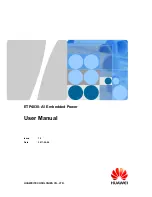
PROGRAMMING YOUR PULSE GENERATOR
KEY PROGRAMMING COMMANDS
The “Programming Manual for -B Instruments” describes in detail how to connect the
pulse generator to your computer, and the programming commands themselves. A
large number of commands are available; however, normally you will only need a few of
these. Here is a basic sample sequence of commands that might be sent to the
instrument after power-up:
*rst
(resets the instrument)
trigger:source internal
(selects internal triggering)
frequency 1000 Hz
(sets the frequency to 1000 Hz)
pulse:width 50 ns
(sets the pulse width to 50 ns)
pulse:delay 20 ns
(sets the delay to 20 ns)
volt:ampl 50
(sets the amplitude to +50 V)
("-N" units should use "volt:ampl -50)
output on
(turns on the output)
For triggering a single event, this sequence would be more appropriate:
*rst
(resets the instrument)
trigger:source hold
(turns off all triggering)
pulse:width 50 ns
(sets the pulse width to 50 ns)
output on
(turns on the output)
volt:ampl 50
(sets the amplitude to +50 V)
("-N" units should use "volt:ampl -50)
trigger:source immediate (generates a single non-repetitive trigger event)
trigger:source hold
(turns off all triggering)
output off
(turns off the output)
To set the instrument to trigger from an external TTL signal applied to the rear-panel
TRIG connector, use:
*rst
(resets the instrument)
trigger:source external
(selects internal triggering)
pulse:width 50 ns
(sets the pulse width to 50 ns)
pulse:delay 1 us
(sets the delay to 1 us)
volt:ampl 50
(sets the amplitude to +50 V)
("-N" units should use "volt:ampl -50)
output on
(turns on the output)
These commands will satisfy 90% of your programming needs.
29
Summary of Contents for AVIR-4D-B
Page 36: ...PCB 158R5 LOW VOLTAGE POWER SUPPLY...
Page 37: ...PCB 235C HIGH VOLTAGE DC POWER SUPPLY...
Page 38: ...PCB 216F PRF PW TR ADJUST...
Page 39: ...PCB 151D PULSE WIDTH RANGE CONTROL...
Page 40: ...PCB 104G KEYPAD DISPLAY BOARD...
Page 42: ...PERFORMANCE CHECKSHEET 42...














































